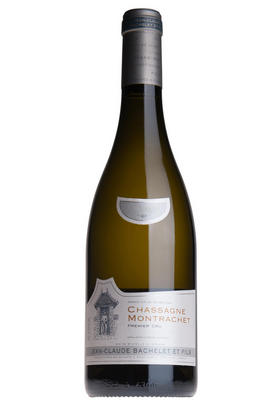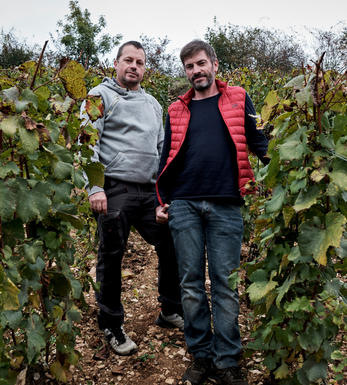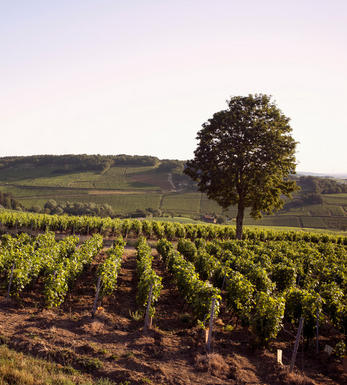
2018 Chassagne-Montrachet, Les Encégnières, Domaine Jean-Claude Bachelet, Burgundy

Critics reviews
Pale lemon colour. Fresh and elegant notes. Quite stylish, not too forceful, a Chassagne from the evident white territory, almost approaching Puligny in style. Fine and very long, without being massive.
Jasper Morris MW, InsideBurgundy.com (November 2019)
A restrained, and slightly less elegant nose reluctantly offers up notes of petrol, herbal tea and white orchard fruit compote. There is excellent volume to the punchy and relatively powerful medium-bodied flavours that coat the palate with dry extract on the equally complex and lingering finale. This is an excellent Chassagne villages that merits your interest.
Drink from 2025 onward
Allen Meadows, Burghound.com (June 2020)
The 2018 Chassagne-Montrachet les Encegnières, matured in 16% new oak, has a lifted bouquet of honeysuckle, wax resin, hints of tangerine and a little acacia, all displaying fine delineation and focus. The palate is very well balanced, slightly honeyed in texture on the entry but matched by a fine bead of acidity. The second half is a little spicy, with lemongrass and stem ginger notes surfacing right at the finish. Very fine.
Jean-Baptiste and Benoît Bachelet have overseen a raft of marvellous wines from their 10 hectares of vine and their winery in the heart of the village of Gamay. "We are biodynamic, although without certification, so we did not have many [dry] windows to treat the vines. It was much easier at the end. We did not lose any production to oidium. We had to use sulphur in the vineyard and then in the hot weather, the sun burnt some of the bunches, so we lost a bit of production there, especially for the older and less vigorous older vines. We harvested from 31 August with the Chassagne reds and finished on 7 September. It took about one week. The yields was around 55hl/ha for the whites and 35hl/ha for the reds. We had been expecting rain at the beginning of August so we were not expecting such big yields. We believe in two winters for the élevage. They wines will be blended in tank next February, then bottled beginning of August."
Drink 2022 - 2036
Neal Martin, Vinous.com (January 2020)
Rich and fleshy, the 2018 Chassagne-Montrachet Les Encégnières bursts with aromas of pear, citrus oil, white flowers and nutmeg. Medium to full-bodied, satiny and textural, it's bright and charming, with an open, giving profile.
Drink 2020 - 2035
William Kelley, Wine Advocate (January 2021)
This wine is a unique entry point to village Chassagne. Domaine Jean-Claude Bachelet owns 0.40 hectares here, touching the Puligny border, right below Bâtard. The vines here are sixty years old and suffering from court-noué, reducing yields, increasing concentration, and advancing ripening. The wine is concentrated yet never loses its delicacy or finesse. There are profuse, ripe aromas of pear and almond with a hint of acacia and a texture that balances elegance with density and length. Lovely.
Drink 2021 - 2040
Charles Curtis MW, Decanter.com (May 2021)
About this WINE

Jean-Claude Bachelet
Jean-Claude Bachelet is considered one of the most conscientious wine producers in St Aubin. The wines are exceptionally well balanced, with understated character and good medium-term ageing potential.
Benoît and Jean-Baptiste Bachelet now head up the estate, having taken over from their father Jean-Claude (who died in 2020). Jean-Claude previously sold much of the estate’s crop to négociants, but nowadays they bottle almost all their wines.
Benoît and Jean-Baptiste have now moved to superb new cellars in the hamlet of Gamay, next to St Aubin.
In the vineyard
The brothers have been experimenting with biodynamic viticulture in the vineyard and have plans to extend this across their holdings in St Aubin, Chassagne-Montrachet and Puligny-Montrachet.
In the winery
The basic principle of a long, slow barrel-ageing for almost two years remains in force, while the state-of-the-art winery has improved consistency.

Chassagne-Montrachet
When it comes to the world's greatest white wines, the border between Chassagne and Puligny is the ‘X’ that marks the spot, the treasure at the end of the rainbow. Within a few hundred metres lie five wonderful Grands Crus, three of which are in Chassagne. They are led by the luscious, perfumed but variable Le Montrachet, to which Chassagne gained permission in 1879, along with Puligny, to hyphenate its name.
Both Montrachet and the rich, nutty, honeyed Bâtard-Montrachet are shared between Chassagne and Puligny. The fragrant, very fine and rare Criots-Bâtard-Montrachet however, lies entirely within Chassagne's borders. The Grands Crus have their own appellations, which is why Chassagne (or Puligny) does not appear on the label.
Although the most southerly of the three great names of the Côte de Beaune, Chassagne's style is often described as lying between that of Puligny-Montrachet and Meursault: less fine than Puligny, less rich than Meursault but containing elements of both. Chassagne is minerally yet succulent, and often floral with hints of hazelnuts. Despite a bevy of very good Premiers Crus, it is not as good or famous, overall, as Meursault and Puligny, but it is usually extremely good value. Grands Crus should not be opened before eight years of age, and can last for 20 or more. Premiers Crus are at their best from five to 15 years of age; village wines from three to eight.
Perhaps surprisingly, given that the name ‘Montrachet’ is so synonymous with white wine, much of the soil in Chassagne is more suited to Pinot Noir than Chardonnay. Indeed it was only really in the second half of the 20th century that white wines began to dominate here. The reds have a firm tannic style that needs time to soften, with the best examples coming from the Premiers Crus Morgeot, Boudriotte and Clos-St Jean. At their best they combine the weight of the Côte de Nuits with the suppleness of the Côte de Beaune.
180 hectares of village Chassagne-Montrachet
159 hectares of Premier Cru vineyards. Several of the larger ones are subdivided and may be cited under various different names. The best include Caillerets, Ruchottes, Chaumées, La Boudriotte
11 hectares of Grand Cru vineyards: Le Montrachet (part), Bâtard-Montrachet (part) and Criots-Bâtard-Montrachet

Chardonnay
Chardonnay is often seen as the king of white wine grapes and one of the most widely planted in the world It is suited to a wide variety of soils, though it excels in soils with a high limestone content as found in Champagne, Chablis, and the Côte D`Or.
Burgundy is Chardonnay's spiritual home and the best White Burgundies are dry, rich, honeyed wines with marvellous poise, elegance and balance. They are unquestionably the finest dry white wines in the world. Chardonnay plays a crucial role in the Champagne blend, providing structure and finesse, and is the sole grape in Blanc de Blancs.
It is quantitatively important in California and Australia, is widely planted in Chile and South Africa, and is the second most widely planted grape in New Zealand. In warm climates Chardonnay has a tendency to develop very high sugar levels during the final stages of ripening and this can occur at the expense of acidity. Late picking is a common problem and can result in blowsy and flabby wines that lack structure and definition.
Recently in the New World, we have seen a move towards more elegant, better- balanced and less oak-driven Chardonnays, and this is to be welcomed.


Buying options
Add to wishlist
Description
This wine is a unique entry point to village Chassagne. Domaine Jean-Claude Bachelet owns 0.40 hectares here, touching the Puligny border, right below Bâtard. The vines here are sixty years old and suffering from court-noué, reducing yields, increasing concentration, and advancing ripening. The wine is concentrated yet never loses its delicacy or finesse. There are profuse, ripe aromas of pear and almond with a hint of acacia and a texture that balances elegance with density and length. Lovely.
Drink 2021 - 2040
Charles Curtis MW, Decanter.com (May 2021)
wine at a glance
Delivery and quality guarantee